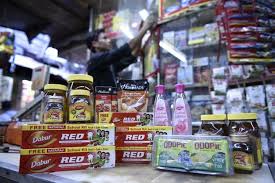 With input costs remaining high, manufacturers of consumer packaged goods have had little choice so far but to increase prices and protect their margins. But with anti-profiteering provisions of the goods and services tax (GST) now in place, increasing prices has become tricky.
With input costs remaining high, manufacturers of consumer packaged goods have had little choice so far but to increase prices and protect their margins. But with anti-profiteering provisions of the goods and services tax (GST) now in place, increasing prices has become tricky.
This clause requires companies to pass on the benefit of reduced tax rates by slashing their prices, bringing an element of ambiguity.
The word “commensurate” as used under the GST law intends to take overall facts and circumstances into its consideration for passing on the benefit, which has not been considered while passing various orders passed by the authority, she said.
“Orders issued recently by the anti-profiteering authority have far-reaching implications because discounts are not considered as reduction in price and decrease in margins are not a valid ground for passing on the benefit of tax reduction to the consumers,” she added. As a result, companies are being cautious with their pricing strategies.
For instance, Hindustan Unilever Ltd (HUL) is increasing prices on selected products to make up for the reduced prices in some others. “Increasing prices and even reducing prices following GST has been a challenge,” Sanjiv Mehta, chairman and managing director, HUL said. Mehta said HUL will take price increases selectively.
According to Mehta, the company has been transparent and has passed on all the benefits to the customers and shared with the government how it has passed on the benefits—through grammage increase and price decrease.
It should be noted that HUL has been accused by Directorate General of Anti-profiteering of not passing on the benefits of GST cuts to consumers and making profits of over ₹400 crore. A ruling on this matter by the National Anti-Profiteering Authority (NAA) is pending. Godrej Consumer Products Ltd (GCPL) is facing a similar dilemma.
“It’s an unknown kind of scenario. GCPL has taken a price increase of 6-12% in its hair colours portfolio. However, wherever the company has taken price increases they have kept all the data and can justify the price increases taken to the last decimal,” V. Srinivasan, chief financial officer and company secretary, said.
“For us, the quantum of price increases will be lower than the input cost increases we face. At the end of the day, the government also has to be pragmatic about the price increases given the way crude is going. All of us are being cautious on price increases,” Vivek Gambhir, managing director and chief executive officer, GCPL said.
It’s not just fast moving consumer goods (FMCG) firms who are in a fix when it comes to raising prices and complying with the anti-profiteering clause; paint makers too seem to be struggling with it.
In July, GST on paints was reduced from 28% to 18%. Despite the cost pressure and given the anti-profiteering clause, paint companies cut prices by 10%.
However, in a bid to protect margin erosion, they hiked prices by around 2.5% effective 1 October and further hikes of 5% are anticipated in months ahead.
Although B.N. Sharma, chairman of the NAA told a recent Confederation of Indian Industry event that the NAA is not a price regulator and that it doesn’t have legislative intent to regulate when it comes to price hike decisions, consumer goods companies prefer to be safe rather than sorry.
Source: LiveMint
We have launched Single Platform on GST Compliances In India, assisting in 4 areas – 1) Compliances, 2) Litigations & Hearings, 3) Training 4) Consultancy. Click this link for any assistance.

 Toll Free:
Toll Free:  Contact Us
Contact Us

